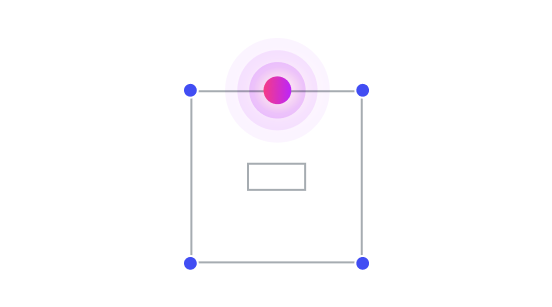
In a stereo program, there is only one way to obtain a centrally placed sound image: mix the signal equally to the Left and Right channels. In a multichannel system, there are three ways to obtain this sound image:
- Create a phantom center just as with stereo
- Use the Center channel alone
- Use all three front channels equally or in varied proportion
Each approach offers advantages and drawbacks. The phantom center has been in use since stereo began, and thus is well understood. The primary disadvantage of this technique is that the listener must be equidistant from the Left and Right speakers to achieve proper center imaging. This is rarely the case in the home, especially when multiple users are playing on a single console.
Using the Center speaker alone creates a stable center image for every listener no matter where they sit. As a result, it is most important to place sounds in the Center channel that benefit from a focused, central audio image. Sounds that are often routed directly to the Center channel include:
- Sound effects emanating from the first-person player character
- Onscreen dialogue during a cinematic sequence
In contrast, it is often beneficial to position environmental sound effects among the four remaining channels (Left, Right, Left surround, and Right surround). These sound effects may include:
- Sounds emanating from opponents or other player characters
- Background music
- Environmental ambiences
Even in a game presented in a third-person perspective, it can help to route audio emanating from the player's character directly to the Center channel. This helps users distinguish their character’s sounds from audio emanating from other sources.
To prevent the image from sounding too focused or narrow, reverb from the Center channel can be spread to the Left and Right channels. Alternatively, distributing the center image among the three front speakers allows control of the range of spatial depth and width.
A phantom center can be reinforced by additional signals in the Center channel, or a Center channel signal can be enhanced with additional signals spread into the L/R pair. However, the more channels that are used to carry the same signal, the more likely it is that side effects may occur. Signals might interact with each other, causing the phantom image to conflict with the true center image. In systems using dissimilar speakers, or in cases where the listeners are seated off the central axis, the sound arriving from all three speakers may not blend well. Differences in arrival time can cause a comb-filtering effect, shifts in tonal color, or a smearing of the image.
Another negative aspect of distributing a signal across the front three channels is a potential loss of audio focus, which is a primary reason for using the Center channel in the first place. Consider all of these effects when placing the exact same signal in all three front channels. In general, it is best to use the Center channel discreetly. If a loss of focus is specifically desired, process the additional signals first to change their spatial character, timbre, or prominence relative to the main center signal.
